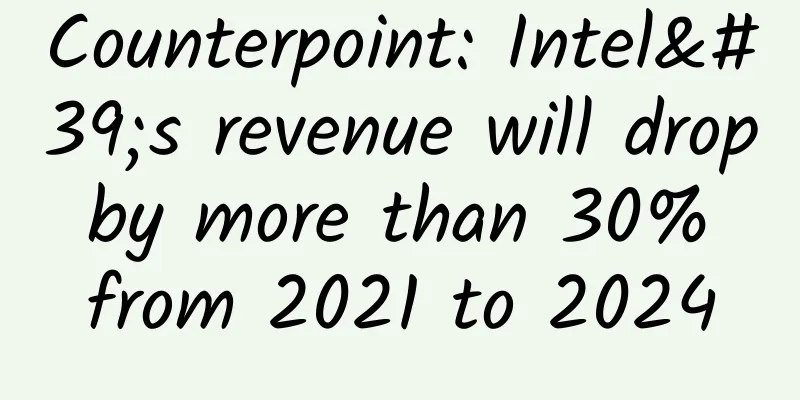Counterpoint: Intel's revenue will drop by more than 30% from 2021 to 2024

|
Intel's revenue plummeted by more than 30% between 2021 and 2024, one of the most challenging periods in the company's history. Intel has lost considerable ground against its main semiconductor rivals Intel's revenue declines reflect an erosion of its dominance in the core CPU market, exacerbated by a stagnant PC industry and growing competition from Advanced Micro Devices (AMD). AMD's latest processors often match or exceed Intel's in performance, energy efficiency, and cost-effectiveness, further undermining Intel's market position. Between 2015 and 2024, Intel's share of the client and server CPU markets plummeted from 80% to around 60%. Intel continues to invest billions to expand its foundry business to regain its glory Intel has traditionally been a leader in semiconductor manufacturing technology in terms of cutting-edge processes and intellectual property innovation. Over the past decade, Intel has experienced significant delays in its transition to more advanced manufacturing nodes. Its semiconductor manufacturing technology, especially the 10nm process (10nm, 10nm+ and 10nm++), has faced multiple challenges, leading to its declining position in the semiconductor industry. In addition, Intel's adoption of EUV technology, production increases, and capacity expansion have been slower than its competitors. This has led to production bottlenecks and delays in new product launches. In contrast, competitors such as AMD, Nvidia, and Qualcomm have gained technological advantages by leveraging TSMC's advanced foundry capabilities. Intel fails to seize the opportunity brought by GenAI demand in 2023 In the data center and PC GPU market, Intel is a latecomer into a market dominated by Nvidia and AMD, which have built up a solid reputation and market share over the past few decades. Nvidia, in particular, has a deep-rooted presence in gaming, professional workloads, and AI applications, setting a high bar for Intel to surpass. Intel's products, such as the Arc series for PCs and Ponte Vecchio for data centers, are still relatively new and need to prove themselves capable of competing with more mature products, especially in terms of algorithms and feature support. |
<<: Huawei nova hands-on review: how the fashionable phone interprets youthful vitality
>>: How big is the gap between Xiaomi's self-developed processor and Qualcomm and Huawei?
Recommend
When an asteroid strikes, what else can we do except let the Earth wander?
When an asteroid strikes, what else can we do exc...
To eat this delicious mushroom, you may need to go to the desert to dig sand
Recently, there is a video that has been going vi...
Why is the International Date Line so winding? Going around Kiribati
Kiribati is located in the central Pacific Ocean ...
Digital marketing and private domain traffic operation, refined customer operation reconstructs the marketing closed loop
In the current era of the new mobile commerce mar...
Li Jianyu 7-day singing bowl body and mind healing course singing bowl music purifies energy micro-course video + audio course
Li Jianyu's 7-day singing bowl body and mind ...
The super weapon of element synthesis! See what is the key to artificially synthesizing elements →
Welcome to Science Popularization China’s special...
The dilemma of operators: WeChat in front and Apple behind
[[134314]] Recently, there has been a lot of disc...
The complete secrets of SEO promotion revealed, only here!
The road ahead is long and arduous, but I will co...
A guide to developing a brand marketing framework!
Put aside all distractions and start perceiving t...
Apple eclipses Japanese electronics giant in solar eclipse
Japanese electronics giants such as Sony, Panason...
What are the functions of the Lanzhou community property management mini program? How much does it cost to develop a property management app?
In order to improve the management efficiency of p...
Pilates Teacher Training Class Brown
Pilates Teacher Training Course Brown Resources I...
From brainstorming to implementation, how should we operate and promote events?
A senior who works in operations said that event ...
Is it really good for diabetics to drink camel milk?
Compiled by: Gong Zixin We know that people with ...
The other side of the layoff wave: Don’t want to “roll” anymore, want to be “N+1”
Yuan Dian clearly remembers that the number of pe...






![A project for everyone to make money by hanging up the machine. Even beginners with zero basic knowledge can operate it and earn more than 5,000 yuan a month [Video Course]](/upload/images/67cc29b75e5ad.webp)


